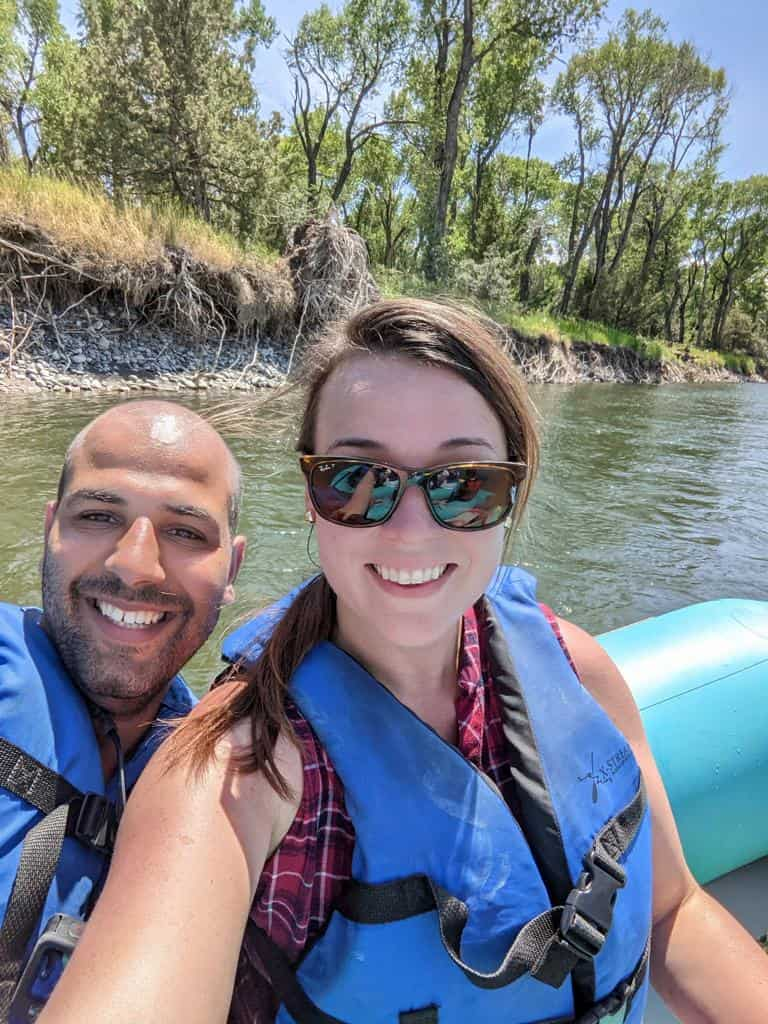What is a Marriage Green Card
A marriage-based green card can be obtained by applying for an immigration visa abroad or by applying for a green card for a spouse of a U.S citizen or permanent resident who is inside the U.S. Although it can be a tedious and complicated process, getting a green card is possible with the right preparation and assistance. However, marriage green card cases vary by individual circumstances. There are essentially two ways you can obtain a marriage green card.
These are:
- Marriage Green Card Inside the U.S (Adjustment of status)
- Marriage Visa Outside the U.S (Consular processing)
A marriage-based green card is valid for a set period of time before you are required to renew it. If you have been married for over two years at the time of the green card interview, you will receive a 10-year green card and spouses of U.S. citizens may apply for their own citizenship after three years of being a Legal Permanent Resident (LPR).
If you have been married for less than two years at the time of the green card interview, you will receive a 2-year conditional green card. Before the two-year expiration date, you must apply for “removal of conditions” to get a 10-year green card. Recipients of conditional green cards based on marriage to a U.S. citizen may also apply for U.S. citizenship after three years of being an LPR (one year after removal of conditions)
Procedures and additional applications vary based on the one that you and your spouse qualify for. To apply for a marriage green card inside the United States, you will need to apply for adjustment of status with USCIS.
Also, cases and forms will differ based on whether the beneficiary (immigrant spouse) is married to a U.S. citizen versus a permanent resident (a green card holder). If you are a foreign spouse living abroad, you are required to apply for a marriage visa through consular processing with the U.S. embassy or U.S. consulate in your home country to come to the United States. Upon arrival to the U.S. you will be admitted as a permanent resident and receive your green card by mail.
If you are married a U.S. citizen or a lawful permanent resident, and you are residing in the U.S on permissible parole or admission, you will file your application with USCIS.
The main difference lies in whether the beneficiary is in the United States or abroad. In this article, we will look at both ways to obtain a marriage green card.
If you are not yet married, you may want to read about the differences between a K-1 visa and a marriage green card.
Below is Shoreline Immigration Lawyer, Lindsey Harris, with her husband Abdo. They are white water rafting on the Yellow Stone River in Montana. They successfully navigated through the marriage green card process for Abdo, and now he is a US Citizen! Lindsey is a great immigration lawyer and would love to speak to you about marriage green cards!

Apply for Marriage Green Card Inside the U.S - Adjustment of Status
If you are married to a U.S. citizen or a lawful permanent resident (LPR), you, as the beneficiary, can apply for a green card while inside the United States through a process known as adjustment of status. This process allows you to file the required applications without having to leave the country and you will not be required to apply for an immigrant visa at a U.S. consulate abroad, as long as certain requirements are met.
Other important details concerning the beneficiary are:
- The beneficiary spouse does not need to leave for consular processing if entered with an inspection.
- Spouses of legal permanent residents must maintain a valid immigration status until their adjustment applications are filed or they will be found ineligible for adjustment. However, visa overstays are forgiven for spouses of US citizens.
- The beneficiary spouse and petitioner should wait at least 90 days after the beneficiary's arrival in the U.S. to get married or to apply for any immigration benefit, change of status, or adjustment of status.
- The beneficiary should receive employment authorization and travel permit within approximately 6-8 months of filing.
- The beneficiary may travel internationally with the I-131 travel document while the case is pending or with other valid visa types (However, it’s not always recommended to travel, especially if previously out of status).
- The beneficiary will receive a 2-year conditional green card if the marriage is less than two years old at the time of the interview.
- Must apply to “remove conditions” within 90 days before the two-year anniversary of becoming an LPR. If approved, the beneficiary will receive a 10-year green card and may apply for citizenship after three years of being an LPR (one year after removing conditions).
- The beneficiary will receive a 10-year green card (without conditions) if married for more than two years at the time of the interview, and the spouse may apply for citizenship after three years. The total processing time for citizenship is generally between 9-12 months, depending on field office processing times.
To apply for adjustment of status inside the U.S., you will need to file several forms with USCIS (U.S. Citizenship and Immigration Services) including:
- I-130, Petition for Alien Relative
- I-130A Supplemental Information for Spouse Beneficiary
- I-485 Application to Register Permanent Residence or Adjust Status
- I-131 Application for Travel Document
- I-765 Application for Employment Authorization
- I-693 Medical Report and Vaccinations
- I-864 Affidavit of support
- Supporting documents such as proof of your relationship and marriage as well as civil and financial Documents, etc.
Additionally, you will need to pay several filing fees and attend a biometrics appointment for fingerprints and photographs. Once your application is submitted, you may remain in the United States while your green card application is being processed. During this time, you are also eligible to apply for work authorization (EAD) and travel permission (advance parole travel document), while your application is pending.
Marriage Green Card Adjustment of Status Processing Time
It usually takes 12-18 months to obtain your marriage green card through adjustment of status, however, other factors like whether your spouse is a U.S citizen or a LPR (green card holder) and also USCIS field office processing times can impact this timeline.
For best results, you must submit your applications and documents in a timely and completed manner. With multiple forms and evidentiary documents, it's easy to miss small details and submit your applications without double checking for errors or oversights. It’s important that your application is completed correctly to avoid any delays or even a denial of your case.
Hiring a trusted attorney is a great alternative to help you gather, collect, and file the applications and documents for your green card. To learn more about green card through adjustment of status processing times, visit USCIS.
Marriage Green Card Adjustment of Status Cost
The marriage green card through adjustment of status will cost an estimated $1,760.00 in filing fees, not including the fees for the required medical exam by a USCIS-approved physician, which can cost anywhere from $100-$500+.
Fees and costs for forms are:
- I-130 Petition for Immediate Relative USCIS Filing Fee: $535.00
- I-485 Application to Adjust Status (Green Card)-USCIS Filing Fee: $1,225.00
- I-693 Medical Report and Vaccinations-$100.00-$500.00 Medical Exam by USCIS Approved Doctor
There are NO USCIS filing fees for the forms listed below:
- I-864 Affidavit of support
- I-131 Application for Travel Document
- I-765 Application for Employment Authorization
- I-130A Supplemental Information for Spouse Beneficiary
Total USCIS Filing Fees: $1,760.00 + Medical Exam Fee
Important: Fees are subject to change by the U.S governments prior to case filing. Learn more here to see up-to-date USCIS fees
Apply for a Marriage Green Card Outside the U.S - Consular processing
If you are outside the United States and married to a U.S. citizen or permanent resident, you will apply for a green card through a process known as “consular processing.” This involves your spouse filing a petition on your behalf and applying for an immigrant visa at the U.S. embassy or U.S. consulate in your home country or the country you reside in.
Applying for a green card outside of the United States requires three steps:
Step 1: 1-130 Petition for Alien Relative
U.S. citizen Petitioner must submit the I-130 Immediate Relative Package to USCIS on behalf of their foreign national spouse. The package includes USCIS forms, evidence of bona fide marriage, marriage certificate and other civil documents required for the US Petitioner and spouse.
Once the I-130 package is filed, it should take around nine months to one year to be approved.
Step 2: National Visa Center
When the I-130 petition is approved, the file will move from USCIS to the NVC within 6-9 weeks and the petitioner will receive a confirmation letter and email once received by the NVC. The petitioner must then designate an agent, pay the Immigrant visa fee and the affidavit of support processing fee online. Next they will complete the DS-260 immigrant visa application online and submit all required civil and financial documents, including the I-864, Affidavit of Support.
This step typically takes around 3 months without complications.
Step 3: Consular Processing
Once NVC receives all required documents, the applicant will be notified that their case is “documentarily qualified” and the file will move to the U.S. embassy or consulate abroad where the spouse resides, and an interview will be scheduled. The spouse must attend the immigrant visa interview and bring original documents for consular review. After the interview, the spouse will be notified if the visa has been approved. If approved, the spouse will receive his/her passport and U.S. visa by courier service. The spouse may then pay the Immigrant Fee online, and must travel to the U.S. within 90 days of receiving his or her immigrant visa.
This step typically takes 2-3 months, depending on the embassy and any delays or closures caused by the COVID-19 pandemic in the country where the U.S. Embassy is located. The spouse may travel to the U.S. and once admitted, they will automatically become a legal permanent resident upon admission, and will receive a green card in the mail within weeks of arrival.
If the marriage is less than two years old at time of the consular interview, you (the beneficiary) will receive a 2-year conditional green card. You must apply for removal of conditions within 90 days prior to the expiration of your green card.
It's important to note that while your visa application is processing, you will not be able to travel to the United States until your immigrant visa is issued. Typically, marriage visa applicants who already have another type of valid visa (like a visitor visa) may travel to the U.S. prior to the approval of their I-130 petition (Step 1), but are not advised to attempt travel to the US while their visa applications are pending during Steps 2 & 3.
Visit the Green Card Eligibility Categories for further details.
Marriage Green Card Consular processing - Processing Time
The marriage based visa application process consists of three steps:
- First, the USCIS processing time for the I-130 petition is typically within 9-12 months for spouses of US citizens.
- Second, the approved I-130 case is transferred to the National Visa Center (NVC) within 6-8 weeks of I-130 approval. The NVC processing time is usually around 3 months, without complications.
- Third, the final step is for the beneficiary to attend their US Embassy interview, which typically takes around 2-3 months, depending on the embassy and any delays or closures in the country where the U.S. Embassy is located. After receiving their visa, the spouse may travel to the U.S. Once admitted, they will automatically become a legal permanent resident upon admission and will receive a green card in the mail within weeks of arrival.
- Note: Administrative Processing after the immigrant visa interview may result in a delay of visa issuance.
Marriage Visa Filing Fees
• I-130 Petition for Immediate Relative USCIS Filing Fee: $535.00
Affidavit of Support Fee: $120.00
• Immigrant Visa Processing Fee: $325.00
• Immigrant Fee: $220.00
• Medical Exam: $100-$500.
NOTE: Fees are subject to change by the U.S. government prior to case filing.
FAQs For How To Get A Marriage Green Card
How can I get a marriage green card in the United States?
What forms do I need to fill out to get a green card through an adjustment of status?
What Forms do I need to fill out to get a green card through consular processing?
Can I Work While Waiting to Get my Marriage Green Card?
Can I Travel Outside of the U.S. During My Marriage Green Card Application Process?
Marriage Green Card Conclusion
The process of applying for a green card whether you are applying for an adjustment of status or through consular processing is a lengthy and complicated process, but with the right preparation and assistance, you can have a successful outcome. It's best to consult a trusted and experienced immigration attorney to help you navigate the marriage green card process.
For more information, contact us to speak with an experienced attorney to get started or visit our website and sign up for a consultation.

